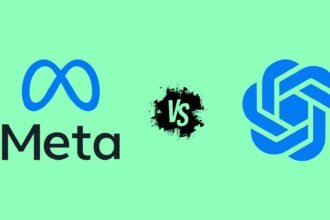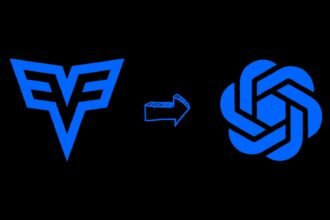Creating long-form content can be a daunting task, but with the aid of Language Learning Models (LLMs), it becomes a manageable and even enjoyable process.
Key strategies involve a combination of clear goal-setting, detailed structuring, and smart prompt engineering to guide the AI effectively. It’s also about striking the right balance between use the AI’s efficiency and injecting human creativity and insight.
Ensuring the content is factual, ethically produced, and resonates with the intended audience is paramount. This approach not only streamlines the content creation process but also enhances the quality and relevance of the output.
Key Strategies for Generating Long Form Content with LLMs
Generating long-form content using LLMs involves a blend of strategic planning and efficient execution. The first key strategy is to define clear objectives and structure for the content. This involves creating a detailed outline that includes main points, subheadings, and key themes, which will guide the LLM to produce coherent and structured content. It’s also important to have a clear goal – whether it’s to inform, persuade, entertain, or educate – as this influences the tone and style of the content.
The second strategy is to utilize prompt engineering effectively. Crafting specific and detailed prompts ensures that the AI’s output aligns closely with your requirements. This process should be iterative: start with broad prompts, assess the output, and then refine your requests based on the initial results for more targeted and relevant content.
Another essential strategy is to blend human creativity with AI efficiency. While LLMs can provide a substantial base layer of content, human input is crucial for adding unique insights, personal touches, and ensuring the content resonates with its intended audience.
It’s also important to leverage AI for research and data gathering. LLMs can quickly provide background information and data, but this should be verified for accuracy, especially in more academic or technical contexts.
Finally, breaking down the content creation into phases (introduction, body, conclusion) and tackling each separately with the LLM helps maintain focus and coherence. After completing each section, reviewing and providing feedback to the model ensures that the content aligns with the overall theme and maintains a consistent quality level.
Best Way to Create Long Form Content Using LLMs

1. Define Clear Objectives and Structure
Begin by creating a detailed outline of your content, including main points, subheadings, and key themes. This guides the LLM to generate coherent and well-structured content.
It’s also crucial to have a clear goal for your content, whether it’s to inform, persuade, entertain, or educate, as this will influence the tone and style of the AI-generated content.
2. Utilize Prompt Engineering
Craft your prompts to be specific about style, tone, and key points, which helps in aligning the AI’s output with your requirements.
Engage in an iterative process where you start with a broad prompt, review the output, and provide more specific prompts based on the initial content. This helps in refining the content progressively.
3. Blend Human Creativity and AI Efficiency
Use the LLM to generate a base layer of content, then add your own insights, examples, and personal touches. Always edit the AI-generated content for flow, consistency, factual accuracy, and tone, ensuring it aligns with your voice or brand.
4. Use AI for Research and Data Gathering
Use LLMs for quick background research and data gathering relevant to your topic, but always verify the accuracy of this information, especially for academic or technical content.
5. Break Down the Content Creation into Phases
Tackle long-form content in sections like introduction, body, and conclusion, using the LLM for each separately. After each phase, review and adjust as needed. This ensures each section aligns with the overall theme and maintains quality.
6. Utilize AI for Different Content Elements
Generate not just text, but also ideas for graphics, tables, or other visual elements. Ask the LLM for relevant examples or case studies to make complex concepts more understandable.
7. Regular Updates and Revisions
Keep the content current by using LLMs to update it regularly, especially for topics that are subject to frequent changes. Revise the content regularly to ensure it remains relevant and accurate.
8. Ethical Considerations and Originality
Ensure the content is original and check for inadvertent plagiarism. Be mindful of the ethical implications of using AI-generated content and use the technology responsibly, especially in sensitive topics.
Best Practices for Editing LLM-Generated Content
Editing LLM-generated content is as crucial as the content generation process itself. The first step in this process is a thorough review for coherence and flow. This involves reading through the content to ensure that it logically progresses from one point to another and that the overall narrative makes sense.
The next best practice is fact-checking and accuracy verification. Since LLMs can sometimes provide outdated or incorrect information, it’s essential to verify the facts, especially for content that requires a high level of accuracy, like academic or technical writing.
Another important aspect is style and tone adjustment. The AI might not always perfectly capture the intended voice or style, so it’s important to tweak the content to ensure it aligns with the desired tone and is appropriate for the target audience.
Grammar and syntax checks are also vital. While LLMs are generally proficient in language use, they can still make mistakes or choose awkward phrasings. Using grammar checking tools and careful manual editing can rectify these issues.
In addition to the above, it’s beneficial to check for originality and plagiarism. Although LLMs generate content based on a vast dataset, ensuring the content’s originality is crucial, particularly in professional or academic contexts.
Lastly, consider the ethical use of AI-generated content. Be transparent about the use of AI in content creation where necessary and ensure it adheres to ethical guidelines, particularly in sensitive topics or industries.
How to Write Long Form Content Using ChatGPT
FAQs: Long Form Content Using LLMs
-
What is prompt engineering, and why is it important in generating content with LLMs?
Prompt engineering involves crafting specific and detailed prompts to guide the AI’s output. It ensures that the AI-generated content aligns closely with your requirements and can be refined iteratively.
-
How can I blend human creativity with AI efficiency when creating long-form content?
Generate a base layer of content using the LLM and then add your own insights, examples, and personal touches. Edit the AI-generated content for consistency, factual accuracy, and tone.
-
What are some best practices for editing LLM-generated content?
Best practices include reviewing for coherence and flow, fact-checking and accuracy verification, adjusting style and tone, checking grammar and syntax, ensuring originality, and considering ethical use.
Conclusion
Generating long-form content with LLMs is an art that blends technological prowess with human insight. While LLMs serve as powerful tools for content creation, their potential is fully realized when paired with strategic planning, creative input, and meticulous editing.
From setting clear objectives to engaging in prompt engineering, and from enhancing AI-generated drafts with human creativity to rigorous fact-checking and ethical considerations, each step is crucial.
As we harness the capabilities of LLMs, it’s important to navigate this landscape responsibly, ensuring that the content not only captivates and informs but also upholds the highest standards of accuracy and ethical integrity.









